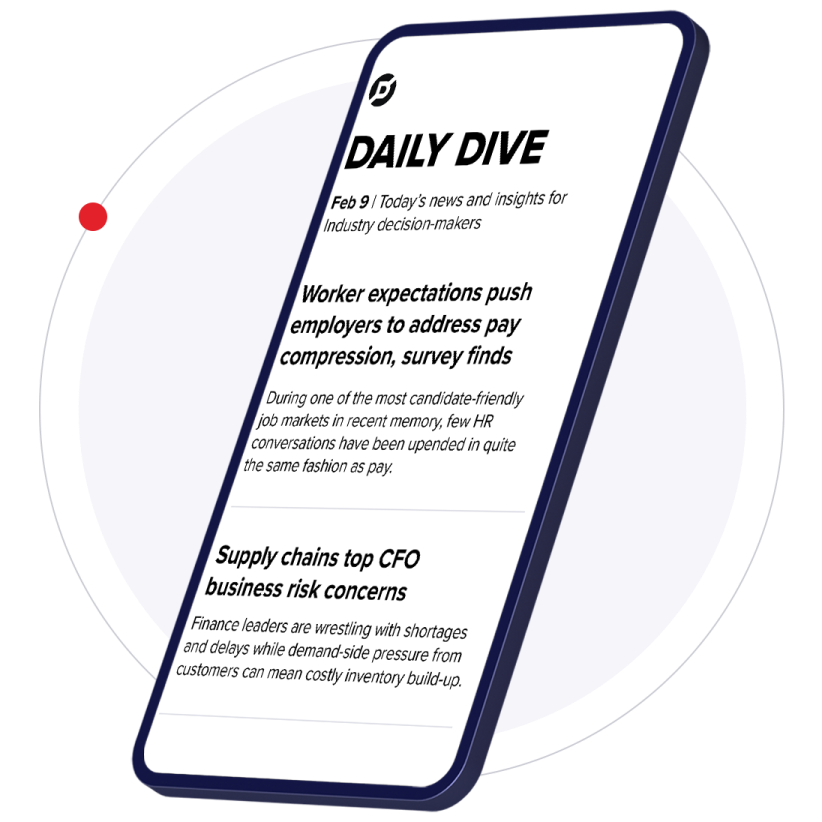Despite recessionary warnings sounding ahead of the holidays and brands tightening their belts, one area of advertising can’t seem to stop growing. Retail media is now estimated to represent 11% of total advertising spend at the global level, a meteoric ascendance for a category that wasn’t widely recognized until a few years ago but is now under the higher level of scrutiny the spotlight provides.
As the market matures and gets more saturated, cracks are forming that resurface old tensions in a brand-retailer ecosystem where the merchant side of the equation has frequently held the chips. Retail media’s stunning upward trajectory at the pure dollar level masks simmering frustrations from marketers that feel obligated to make buys or lose out, even if the strategy proves unprofitable or feels like a cost of doing business versus a nice-to-have perk.
With a lack of industry standardization, third-party solutions providers also see an opportunity to patch over the gaps that retailers are unlikely to mend of their own volition. And hovering in the background is the chance of consolidation that would lead to just a few heavyweights wielding influence. GroupM forecasts ad revenue for retail-based companies will grow nearly 15% this year to $101 billion and reach $160 billion by 2027.
“The relationship has always been fraught,” said Nikhil Lai, a senior analyst that specializes in performance marketing at Forrester Research, of brands and retailers. “That relationship is now being put through the crucible of retail media, and it's being changed in many ways.”
Growing pains
Given the amount of money pouring into retail media channels, pretty much any company that owns a brick-and-mortar store, e-commerce website or app is racing to stand up an ad network that can grab a piece of the pie. Trade shows have been abuzz with the topic, with a raft of presentations from companies like Walmart, Target, Albertsons and Kroger touting the latest in their tech and media innovations (the latter two are also trying to merge, which would create an even more formidable player in the grocery vertical).
“We've seen a tremendous growth in retail media network investments from our clients,” said Jeremy Woodlee, a managing director at Accenture Song, during an Advertising Week New York panel in October. “Virtually every client we have, in retail and beyond, [is] looking at this.”
Interest in retail media is driven by the promise that merchants can apply their troves of first-party shopper data to better target and measure ad campaigns, all while placing messages closer to the point of sale. The value of the “closed-loop” measurement proposition has only increased as third-party cookies face deprecation and performance marketing is decimated on social media platforms like Facebook and Instagram due to privacy changes implemented by Apple.
Meanwhile, marketers are under pressure to prove their efforts can be tied to results in the short term as the economy takes a nosedive. Ad spending has steadily slipped in recent months as brands try to make smarter choices with their dollars.
“Most of the growing pains come from the fact that retail media is at its infancy compared to more traditional forms of media."

Rachel Tipograph
Founder and CEO, MikMak
There are other perks to retail media that stand out during an especially tumultuous digital period. Ads for pet food running on an e-commerce site people visit to browse and shop for similar products won’t appear next to conspiracy theories or hate speech, for instance.
“What brands appreciate about retail media is that there is stronger attribution data (from media impression to [omnichannel] sales) and they consider it ‘more brand-safe’ compared to other forms of traditional media,” said Rachel Tipograph, founder and CEO of MikMak, an e-commerce services provider, over email.
However, traditional retailers’ grasp of digital technology has historically been patchy, to say the least. The fast influx of brand dollars to retail media has led many to rush to scale up their offerings and partner with outside vendors, but most networks remain fairly rudimentary. Advertising supply can be limited, according to Tipograph, which can drive up rates. Additionally, there’s a shortage of the types of real-time reporting and self-service functions that marketers are accustomed to on digitally native platforms.
“Most of the growing pains come from the fact that retail media is at its infancy compared to more traditional forms of media,” said Tipograph.
There’s also the issue of internal silos on the retailer’s end. Retail media teams are relatively new and making smart hires, but a lot of shots are still called by the stodgier merchant side of the house. That can create complexities where the retail media division is working closely with certain brand partners that want to boost their profile, while other pockets of the organization are focused on conflicting areas.
“There is a disconnect between the retail media side and the merchant side,” said Michael Harrison, a managing partner at the management consultancy Winterberry Group. “Ultimately, the [key performance indicators] and objectives of the organization have to be aligned. And right now that alignment is not occurring.”
Walled gardens revisited
Endemic marketers — the packaged goods companies that rely on store and digital shelves to reach shoppers — for years have also warned that retail media networks run the risk of mirroring the walled gardens of Facebook and Google that came to dominate the digital sphere. Retailers put on a compelling pitch to advertisers around driving incrementality but are keeping their data as close to the vest as ever. The result is a lack of transparency, some experts say.
“Kroger grades their own homework, Walmart grades their own homework and everybody feels that it's not truly moving the needle and they don't trust the numbers,” said Harrison.
Marketers have taken assessing retail media into their own hands or tapped outside vendors and agencies to get a clearer picture. Software companies and ad agencies with historic shopper know-how have been able to piggyback off this demand to help brands solve for what’s termed “signal loss.”
"Everybody feels that it's not truly moving the needle and they don't trust the numbers."

Michael Harrison
Managing partner, Winterberry Group
With more tools at their disposal, brands for the first time are factoring retail media into media mix models (MMM) where it can be compared against the historic performance of other areas of spending.
“It's a matter of time, it's a matter of data volume. It's also just a natural human tendency to need verification,” said Forrester’s Lai.
“This is the first year that marketers have sufficient data to add Amazon or Walmart into their MMM,” he added. “They're able to compare the profitability of retail media as a channel versus search versus social versus TV versus out of home.”
Fear of retaliation
Subsequent whispers that some retail media is unprofitable stem from the fact that buys rarely happen in isolation for endemic brands.
"They're scared of spending less than they could, because they're worried that retailers might retaliate against them."

Nikhil Lai
Senior analyst, Forrester Research
Slotting fees, traditional shopper marketer agreements and other fines to serve retailers tally up, and are entrenched through long-standing relationships that predate the retail media craze. Some view the cumulative cost increasingly as a “tax” versus a benefit, according to Winterberry Group’s Harrison. That factor can feel particularly sharp when buying media outside the retailer’s owned and operated platforms, or “off-site.”
“All of the markups on top of it turns it into negative [return on ad spend],” said Harrison. “The retail media networks aren't getting that inventory for cheaper, they're just adding fees on top of it, and the performance doesn't justify the increased fee.”
Avenues of recourse are limited because endemic brands act as retailers’ customers. They rely on them for prime shelf placement and positive rankings on e-commerce marketplaces to drive sales. Some are starting to fear some form of retaliation if they spend less than they can on retail media, experts said.
“The threat is imagined, but is nonetheless credible,” added Lai. “The brands need the retailers so much more than the retailers need the brands.”
Proposed deals like the Kroger-Albertsons merger at the same time stoke the anxiety that power in retail media could be further consolidated into just a few hands, further tipping the scales and leaving brands with fewer alternatives over the long run.
“You'll probably have, in reality, three big walled garden entities that compete against each other. I assume that there will be some form of a consortium of the other players that come together similar to an ad network back in the early days,” said Harrison. “It has to be that way. Otherwise, nobody will spend with them.”























